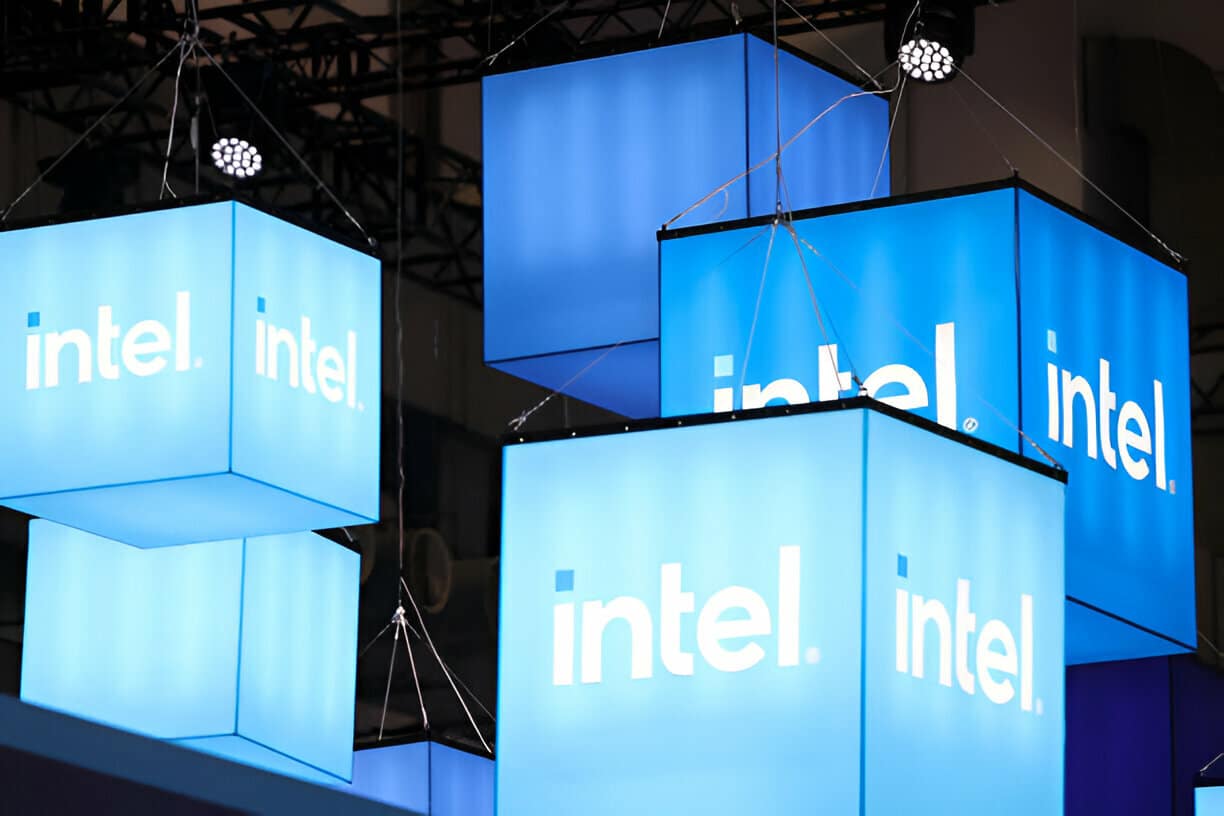FintechZoom Intel Stock

FintechZoom Intel Stock has become a significant point of interest for investors and financial analysts alike. As one of the leading technology companies globally, Intel’s stock performance provides critical insights into the tech sector’s health.
This article will delve into various aspects of Intel stock, including its history, current performance, benefits, risks, and future predictions. Additionally, we will offer a step-by-step guide for investing in Intel stock and answer some frequently asked questions.
What Is Fintechzoom Intel Stock?
Intel stock represents ownership in Intel Corporation, a global technology company renowned for its innovation in semiconductor manufacturing. As a publicly-traded company listed on the Nasdaq under the ticker symbol INTC, Intel’s stock is a popular choice for investors seeking exposure to the technology sector.
History of Intel Stock
Intel Corporation was founded in 1968 by Gordon Moore and Robert Noyce. The company went public in 1971, and since then, Intel stock has seen significant growth, reflecting its position as a leader in the semiconductor industry.
Key milestones in Intel’s history include the introduction of the first microprocessor in 1971, dominating the PC market in the 1980s and 1990s, and diversifying into data centres and artificial intelligence in recent years.

Intel Stock Updated Price 2024
As of 22 June 2024, Intel’s stock price is $31.09 per share.
Benefits of Intel Stock Investment
Investing in Intel stock can offer various benefits, depending on your investment strategy, goals, and the overall market environment. Here are some key benefits of investing in Intel stock:
- Strong Market Position:
Intel is one of the leading companies in the semiconductor industry, providing a competitive edge due to its significant market share and influence.
- Technological Leadership:
Intel has a history of innovation and technological advancements, consistently developing cutting-edge products in areas like processors, data centres, and AI.
- Diversified Product Portfolio:
Intel’s diverse range of products and services, including processors for PCs, data centers, Internet of Things (IoT) solutions, and autonomous driving technology, offers multiple revenue streams.
- Financial Performance:
Intel has a track record of solid financial performance, with strong revenues, profitability, and cash flow, which can be attractive to investors looking for stable returns.
- Dividend Payments:
Intel is known for paying regular dividends, providing investors with a steady income stream. This can be particularly appealing for income-focused investors.
- Growth Opportunities:
Intel is positioned to benefit from several growth trends, including the increasing demand for cloud computing, AI, 5G, and autonomous vehicles.
- Research and Development:
Significant investments in research and development ensure that Intel remains at the forefront of technological innovation, which can drive future growth and enhance its competitive position.
- Strategic Acquisitions and Partnerships:
Intel’s strategic acquisitions and partnerships help expand its capabilities and market reach, such as the acquisitions of Mobileye and Habana Labs, which enhance its AI and autonomous vehicle technology offerings.
- Global Presence:
With a strong global presence, Intel can leverage opportunities in various international markets, reducing dependence on any single region.
- Resilience and Adaptability:
Intel has demonstrated resilience and adaptability in navigating market challenges and competitive pressures, which is crucial for long-term sustainability.
- ESG Considerations:
Intel’s commitment to environmental, social, and governance (ESG) principles can attract socially responsible investors who prioritize sustainable and ethical business practices.
- Valuation:
Depending on the market conditions, Intel stock may be considered undervalued compared to its peers, presenting a potential buying opportunity for value investors.
Also Read: FinTechZoom MSFT Stock Price
Risks of Intel Stock Investment
Investing in Intel stock, like any other stock, carries various risks. Here are some of the key risks associated with investing in Intel:
1. Market Competition
Intense Competition: Intel faces fierce competition from other major semiconductor companies like AMD, NVIDIA, and ARM. These competitors continuously innovate and could potentially capture market share from Intel.
Technological Advancements: The semiconductor industry is highly dynamic, with rapid technological advancements. Failure to innovate or keep up with the latest technology trends can put Intel at a significant disadvantage.
2. Market Demand and Cyclical Nature
Cyclical Industry: The semiconductor industry is highly cyclical, with periods of high demand followed by downturns. This cyclicity can affect Intel’s revenue and profitability.
Market Demand: Fluctuations in demand for PCs, servers, and other electronic devices directly impact Intel’s sales. Changes in consumer preferences or economic downturns can reduce demand for Intel’s products.
3. Supply Chain Issues
Supply Chain Disruptions: Intel relies on a complex global supply chain for its components and materials. Disruptions in the supply chain, such as those caused by geopolitical tensions or natural disasters, can adversely affect production and delivery.
4. Regulatory and Political Risks
Regulatory Environment: Changes in regulations, including environmental, trade, and intellectual property laws, can impact Intel’s operations and profitability. Compliance with stringent regulations can increase operational costs.
Geopolitical Tensions: Intel operates globally, and geopolitical tensions or trade wars, especially between major economies like the U.S. and China, can impact its business operations and market access.
5. Technological Transition Risks
Manufacturing Challenges: Transitioning to new manufacturing processes (e.g., from 10nm to 7nm nodes) is complex and costly. Delays or inefficiencies in these transitions can affect product performance and market competitiveness.
R&D Investments: High investment in research and development is crucial for staying competitive. However, there’s no guarantee that these investments will yield successful products or technologies.
6. Financial Risks
Revenue Dependence: Intel has significant revenue dependence on a few key customers. Loss of any major customer could have a substantial impact on its financial performance.
Currency Fluctuations: As a global company, Intel is exposed to risks associated with currency exchange rate fluctuations, which can impact its revenues and profitability.
7. Legal Risks
Litigation: Like many large corporations, Intel faces the risk of legal challenges, including intellectual property disputes, antitrust cases, and other litigation. These legal battles can be costly and time-consuming.
8. Market Perception and Investor Sentiment
Stock Volatility: Intel’s stock price can be highly volatile, influenced by market perceptions, quarterly earnings reports, and broader economic conditions. Negative news or analyst downgrades can lead to significant stock price declines.
Investor Sentiment: Market sentiment and investor behaviour can also impact stock prices. Negative sentiment, whether justified or not, can lead to sell-offs and reduced stock valuations.
Future Prediction of Intel Stock
Analysts predict mixed outcomes for Intel stock. While some foresee continued growth driven by technological advancements and market expansion, others are cautious due to competitive pressures and market uncertainties. However, Intel’s strategic initiatives in AI, data centres, and IoT (Internet of Things) could potentially drive significant growth in the long term.
Step by Step Investment Guidelines for Intel Stock
- Research and Education: Understand Intel’s business model, products, services, industry position, and financial health. Learn basic investing principles such as risk management, portfolio diversification, and valuation metrics.
- Set Investment Goals: Determine your investment horizon (short-term or long-term) and define your risk tolerance based on your financial situation and investment goals.
- Analyze Intel Stock: Conduct fundamental analysis by evaluating financial statements and performance indicators. Perform technical analysis using stock price charts and technical indicators to identify trends and entry/exit points.
- Follow Market News and Sentiment: Stay updated with news related to Intel and the semiconductor industry, monitor market sentiment through analyst reports and news articles, and consider macroeconomic factors affecting the stock.
- Develop and Execute an Investment Strategy: Decide on an investment approach (value, growth, or dividend investing), set target buy/sell prices, determine capital allocation, execute trades through a brokerage, and regularly monitor and review your investment.
Conclusion
Investing in Intel stock offers potential rewards and comes with its share of risks. By understanding the history, current performance, and prospects of Intel, investors can make informed decisions. This guide provides a comprehensive overview and practical steps to help you navigate your investment journey in Intel stock.
FAQs
What is the ticker symbol for Intel stock?
The ticker symbol for Intel stock is INTC.
Does Intel pay dividends?
Yes, Intel pays dividends to its shareholders.
What factors influence Intel’s stock price?
Intel’s stock price is influenced by market conditions, company performance, technological advancements, and economic indicators.
Is Intel stock a good long-term investment?
Intel stock can be a good long-term investment due to its strong market position and growth potential in emerging technologies.
How can I buy Intel stock?
You can buy Intel stock through a brokerage account. Research, open an account, fund it, and place a buy order for INTC shares.
By following these guidelines, you can navigate the complexities of investing in Intel stock and potentially reap the benefits of this technology giant’s future growth.






